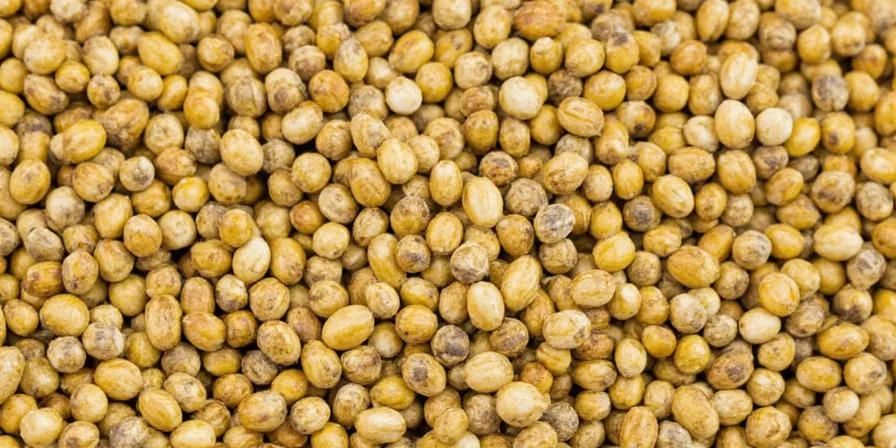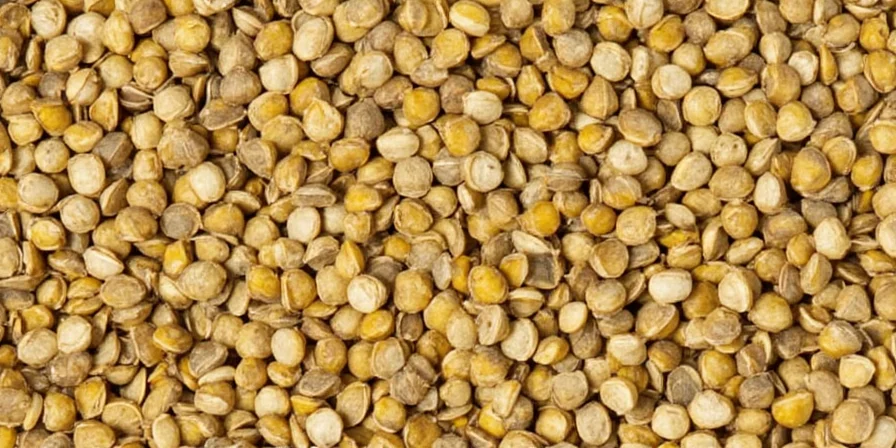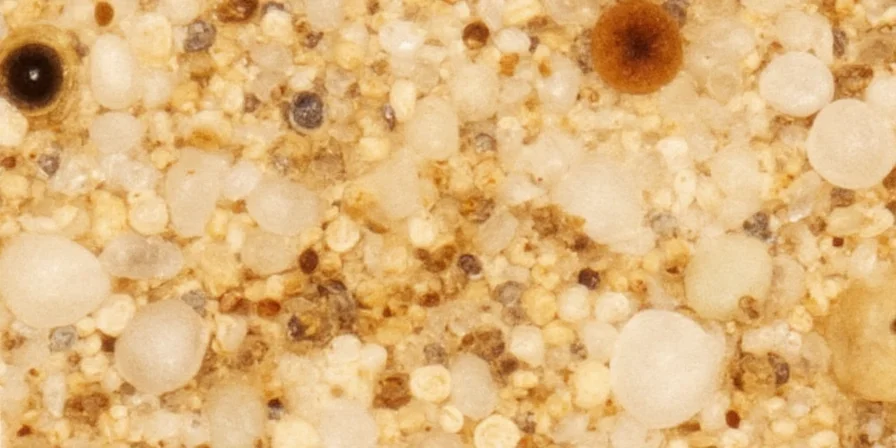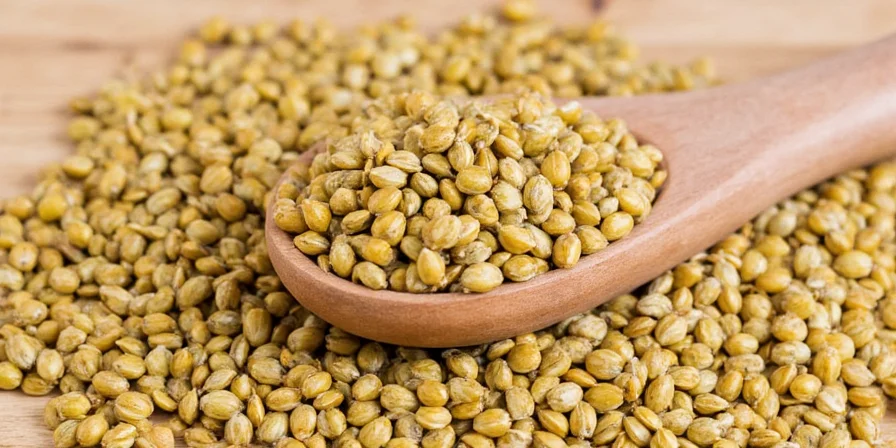Mustard seeds are small but powerful ingredients that add depth and complexity to countless dishes. If you've ever wondered why your curry or pickle lacks that authentic restaurant flavor, the answer often lies in how you're using mustard seeds. This guide reveals exactly how to use them properly, with practical techniques that work in home kitchens.
Mustard Seeds Explained Simply
Mustard seeds come in three main varieties you'll find in grocery stores:
- Yellow/White Mustard Seeds - Mild flavor, perfect for pickles and salad dressings
- Brown Mustard Seeds - Medium heat, ideal for Indian and Southeast Asian dishes
- Black Mustard Seeds - Strongest flavor, used in South Indian cooking and specialty mustards
Here's what most home cooks get wrong: mustard seeds need proper heating to unlock their flavor. Simply adding them to cold oil won't work. The secret? Heat oil until it shimmers (about 320°F), then add seeds. They'll sizzle and pop within seconds - that's when the magic happens.

Which Mustard Seed Should You Use? (Quick Reference)
| Type | Best For | Heat Level | Where to Find |
|---|---|---|---|
| Yellow/White | Pickles, salad dressings, hot dogs | Mild (1/5) | Most grocery stores |
| Brown | Curries, stir-fries, marinades | Medium (3/5) | International food aisles |
| Black | Authentic South Indian dishes | Hot (4/5) | Specialty Indian markets |
3 Mustard Seed Techniques That Transform Home Cooking
These simple methods work with basic kitchen equipment:
- The Perfect Tempering Method: Heat 1 tablespoon oil until a drop of water sizzles. Add 1 teaspoon mustard seeds. When they start popping (5-10 seconds), immediately add your other spices. This prevents burning and maximizes flavor.
- No-Oil Option for Healthier Cooking: Dry roast seeds in a pan over medium heat for 60-90 seconds until they darken slightly and become fragrant. Grind and add to dishes at the end.
- Quick Pickle Boost: Add 1 teaspoon mustard seeds to your pickle brine. They help preserve crunch and add subtle complexity without overpowering.

Common Mistakes to Avoid
Even experienced home cooks make these errors:
- Burning the seeds - Remove from heat as soon as they pop (they continue cooking off heat)
- Using expired seeds - Whole seeds last 2-3 years, ground only 6 months (store in cool, dark place)
- Incorrect substitutions - Don't replace black mustard seeds with yellow in Indian recipes - the flavor profile is completely different
- Adding too early - Always add mustard seeds before other spices except asafoetida (hing)
Easy Mustard Seed Recipe: 10-Minute Restaurant-Style Dal
Try this simple dish that showcases mustard seeds' magic:
- Heat 2 tbsp oil until shimmering
- Add 1 tsp mustard seeds and 1/2 tsp cumin seeds
- When seeds pop (5-10 seconds), add 1 chopped onion
- Cook until golden, then add 1 cup cooked lentils and 1 cup water
- Simmer 5 minutes and finish with fresh cilantro
The mustard seeds create a flavor foundation that makes this simple dal taste restaurant-quality.

Health Benefits You Can Actually Use
Mustard seeds offer real benefits when used properly in cooking:
- Digestion aid - Just 1/2 teaspoon in meals stimulates digestive enzymes (perfect with heavy foods)
- Preservative properties - Naturally extends freshness of pickled vegetables
- Flavor enhancer - Reduces need for salt while adding complexity to dishes
Storage Tips That Keep Seeds Fresh Longer
Don't waste money on stale spices:
- Store whole seeds in airtight container away from light
- Buy small quantities - they lose potency after 2 years
- Test freshness: Fresh seeds should pop within 5 seconds of hitting hot oil
- Freeze excess seeds for up to 3 years (thaw before using)
Where to Buy Quality Mustard Seeds
Not all mustard seeds are equal:
- Look for plump, uniform seeds without cracks
- Avoid seeds with musty smell (sign of moisture damage)
- Local Indian markets often have fresher stock than supermarkets
- Buy whole seeds, not pre-ground (grind as needed for maximum flavor)
Frequently Asked Questions
Can I use mustard powder instead of seeds?
Yes, but with important differences. Use 1 teaspoon powder for every 1.5 teaspoons seeds. Powder works better in cold applications like dressings, while seeds provide texture and visual appeal in cooked dishes. For authentic Indian cooking, seeds are essential - powder won't give the same flavor profile.
Why do my mustard seeds burn before popping?
This happens when oil is too hot. Test with a mustard seed first - it should sink then rise slowly before popping. If it burns immediately, oil is over 350°F. Ideal temperature is 320°F - use a thermometer or the water drop test (water should sizzle but not violently spatter).
How can I fix bitter mustard flavor in my dish?
Bitterness comes from overcooked seeds. Fix it by: adding 1 teaspoon honey or sugar, stirring in 1/4 cup coconut milk, or adding a squeeze of fresh lime. Next time, remove seeds from heat as soon as they pop (5-10 seconds in hot oil).
What's the easiest way to use mustard seeds for beginners?
Start with this foolproof method: Heat 1 tbsp oil, add 1 tsp mustard seeds and let pop for 10 seconds, then immediately add frozen mixed vegetables. Cook until hot. The seeds add incredible depth to simple stir-fries without overwhelming the dish.
Do mustard seeds really expire?
Yes. Whole seeds last 2-3 years when stored properly, ground seeds only 6 months. Test freshness: Fresh seeds should pop within 5 seconds in hot oil and have a sharp, clean smell. Stale seeds won't pop properly and smell musty or flat.
Putting It All Together
The secret to great cooking with mustard seeds isn't complicated equipment or hard-to-find ingredients - it's understanding their simple science. By heating them properly, storing them correctly, and using the right type for your dish, you'll immediately notice more authentic, restaurant-quality results.
Start with one technique this week: try tempering mustard seeds before adding other spices to your next curry or stir-fry. You'll taste the difference immediately - that unmistakable nutty, complex flavor that transforms ordinary dishes into something special. Within days, you'll wonder how you ever cooked without them.











 浙公网安备
33010002000092号
浙公网安备
33010002000092号 浙B2-20120091-4
浙B2-20120091-4